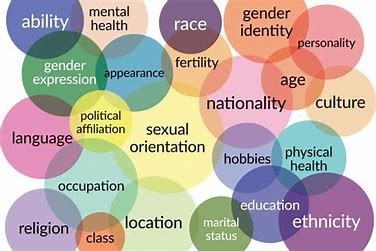Women's Alliance and DEI
- Filed under "education"
- Published Monday, May 1, 2023
- « back to articles

Our recent work with Women’s Alliance (grantee) partners around diversity, equity, and inclusion (DEI) taught us that the interconnectedness of these concepts is essential in creating a fair and equitable society. We focus on gender equity at Chrysalis – it’s woven into our DNA – but it’s also critically important for us to consider other factors that affect girls and women, and a major one is race.
We’re certainly not experts in racial equity, but we’re continuously learning and adopting what we learn in our processes, practices, and grantmaking. One of the biggest challenges may be an assumption that certain terms are commonly understood – which is often not the case. For example, the following 3 terms are closely related, but different in specific applications:
RACIAL EQUITY is the condition that will be achieved when race can no longer be a predictor of life success. This requires us to begin with the outcomes we hope to achieve and working backward to determine actions that will achieve racially equitable outcomes.
RACIAL JUSTICE is the strengthening of attitudes, actions, policies, and practices that produce equitable access, opportunities, power, and outcomes for everyone. Racial justice differs from racial equity because it is focused on root causes and institutions that perpetuate inequities based on race or fail to remove these inequities.
STRUCTURAL RACISM is the current and historical racism that has occurred throughout institutions that creates an entire system that negatively affects people and communities of color.
According to Race Forward: As an outcome, we achieve racial equity when race no longer determines one’s socioeconomic outcomes; when everyone has what they need to thrive, no matter where they live. As a process, we apply racial equity when those most impacted by structural racial inequity are meaningfully involved in the creation and implementation of the institutional policies and practices that impact their lives.”

These concepts can similarly applied to gender – equity, justice, and structural/systemic gender barriers. So, as an outcome, we achieve gender equity when gender no longer determines one’s socioeconomic outcomes – when everyone has what they need to thrive, regardless of gender.
There are a range of inequities that affect people – particularly girls and women - and they often compound the challenges and barriers girls and women face. This is called intersectionality, which is a framework for understanding all the various “identities” that combine to create both discrimination and privilege.
Understanding intersectionality has always been critical in our work and continues to present more complex challenges for the girls and women in our after-school programs and supported by our grantee partners.
The more we can build awareness among community leaders, policymakers, and elected officials of these challenges, the more we can build partnerships in our community that will truly make a difference in the lives of girls and women – and in our society.